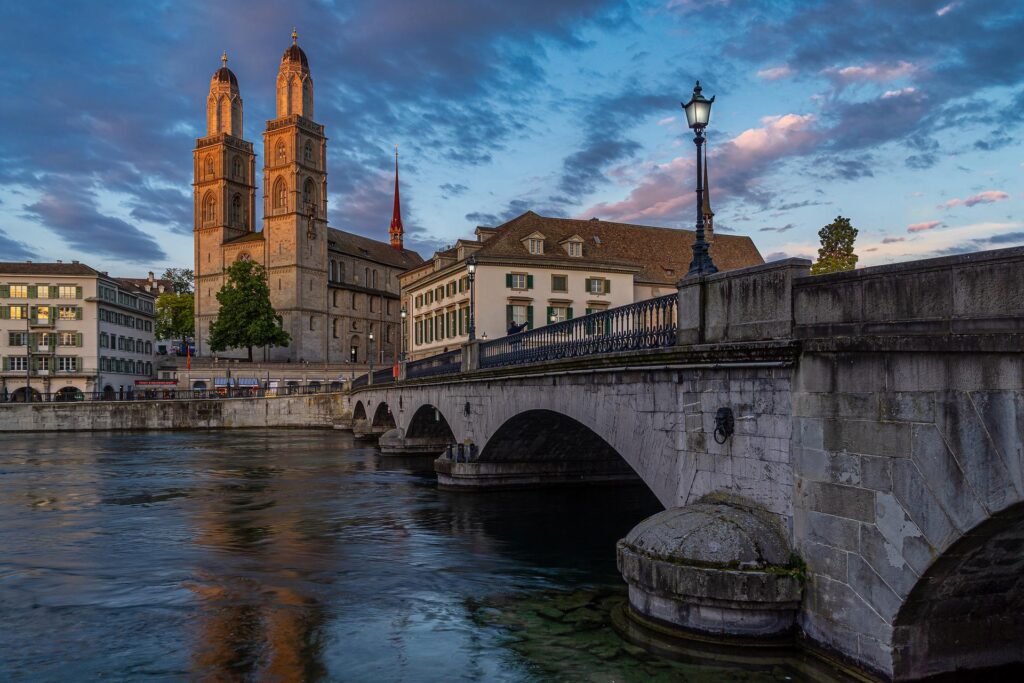Sechseläuten – Zurich’s spring festival
Sechseläuten (Sächsilüüte in Zurich German) is a festival with a 100-year tradition celebrating the beginning of spring in Zurich, held every year in mid to late April. In addition to guild members in historical costumes, the event features marching bands, horses, flowers, flags and the “Böögg”.
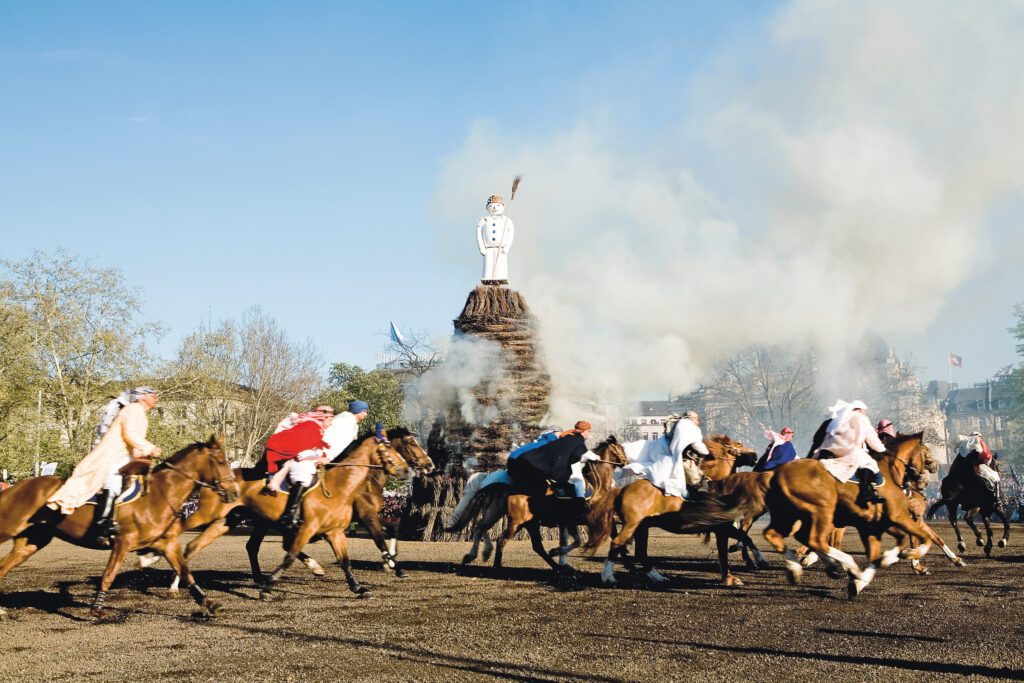
On Monday afternoon, the procession of the Company for the Constaffel and the 25 Zurich guilds takes place. Around 3,500 guild members in their traditional costumes, dresses and uniforms, their guests of honour, over 350 horsemen, around 50 exclusively horse-drawn carriages and around 30 music groups march in counter march through Bahnhofstrasse and Limmatquai to Sechseläutenplatz near Bellevue. The order of the processions is decided each year in November by delegates of the Central Committee of the Zurich Corporations (ZZZ). The guilds “zum Weggen”, “zum Kämbel” and “Wiedikon” are placed first and last respectively in the procession because of their large groups of riders in a defined rotation mode. The guilds’ procession is led by the Zurich city police, the ZZZ and the banners of the host municipalities and cantons. The guild members and guests of honour are presented with flowers and kisses by the spectators.
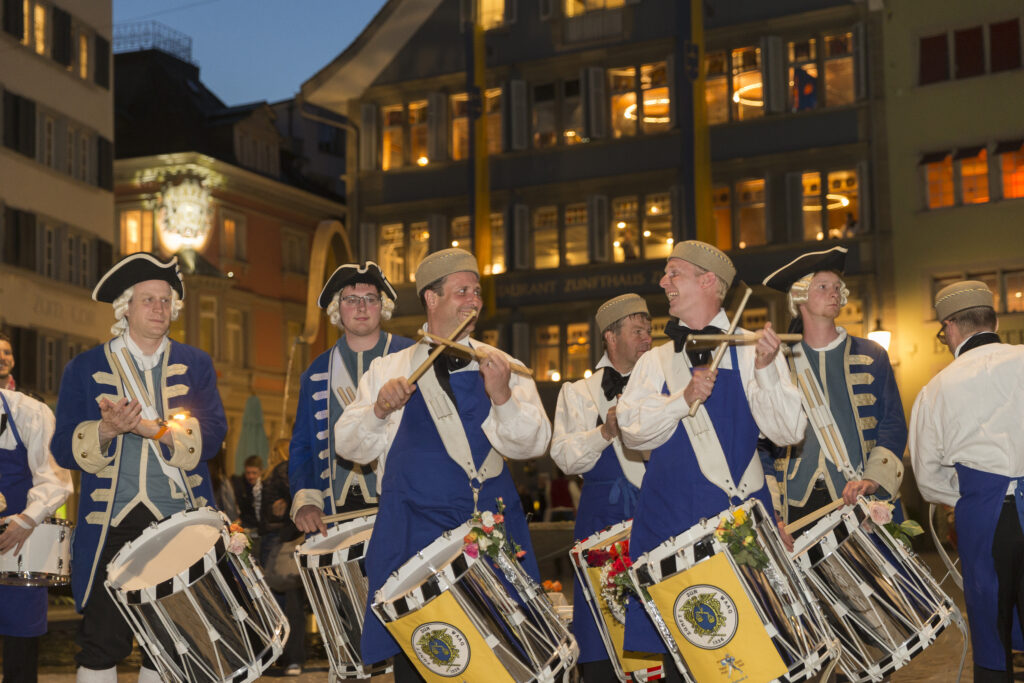
Today’s Sechseläuten can be traced back to three different roots:
- The first root to the Zurich guilds, which, as political, military, social and commercial institutions, have guided and determined the fate of the city for over 450 years. They are the sponsors of the Zurich Spring Festival. The old trade regulations of the guilds determined the working hours of the craftsmen.
- The second root of the Sechseläuten is related to the fact that in summer, the “six o’clock bell” signalled the end of working hours, while in winter, due to light conditions, work could only be done until five o’clock.
- The third root is a pagan custom, i.e. burning the winter as a symbol of the beginning of the warmer seasons.
History of the festival
In the 16th century, the Zurich Council, which at that time consisted exclusively of guild members, decreed that the end of working hours in summer should be one hour later than in winter.
On the first Monday after the equinox, to mark the beginning of spring, the second largest church bell in Grossmünster tolled 6 p.m. on time. From that day until late autumn, people worked an extra hour. Since then, the ‘Sächsilüüte’ (six o’clock tolling) has always been celebrated.
The Böögg
The real star of the festival is the ‘Böögg‘, which means ‘masked and hooded figure‘ (cf. ‘Fasnacht Bögg’): it is an artificial snowman filled with wood wool and firecrackers, symbolising winter. When the church in Grossmünster rings six o’clock, it is set on fire and it is said that the sooner the head full of fireworks explodes, the more beautiful the summer will be. A duration of 5 to 12 minutes indicates a sunny and warm summer. Beyond this time frame, the summer months are likely to be rather rainy.
On the Monday of the event, at 6 p.m. sharp, it is set on fire on Sechseläutenplatz. As a symbol of winter, the bonfire is meant to welcome spring.
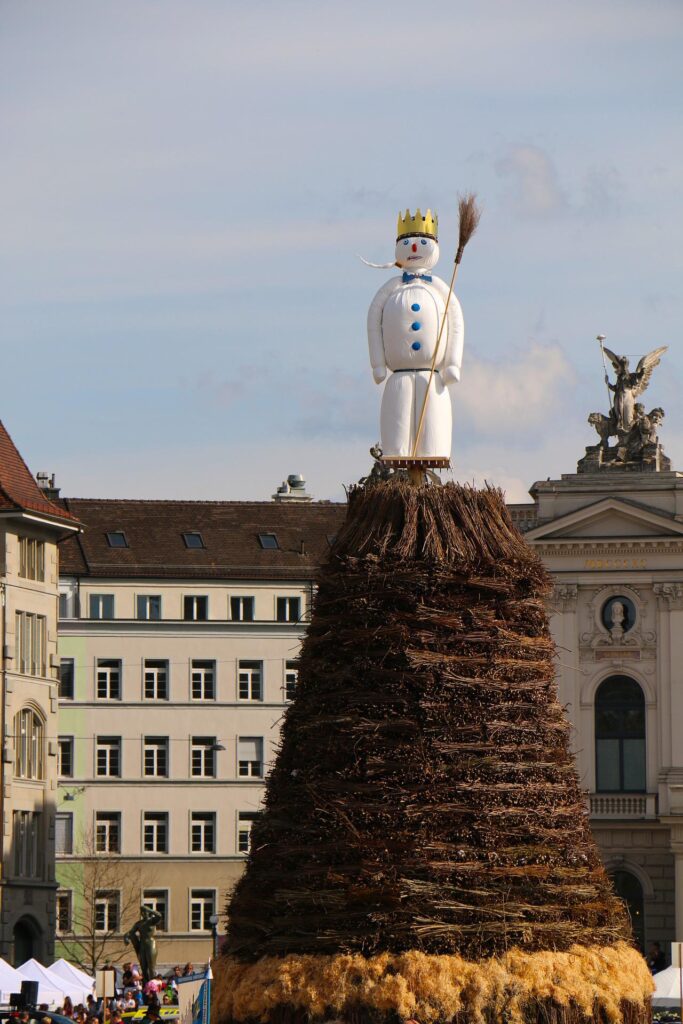
Incidents and special events:
- In 1921, a boy, presumably instigated by communists, set fire to the Böögg as early as 1.30 p.m.
- In 1944, the Sechseläuten took place in the port of Enge, as vegetables had been planted on the Sechseläutenwiese. During that edition, the “Böögg” fell into Lake Zurich.
- In 1950, 1960, 1993 and 1994, the ‘Böögg’ fell from the pyre before its head exploded.
- In 2006, the ‘Böögg’ was stolen by the ‘1. Mai – Strasse frei’ group, reappeared at the 1 May festival on Helvetiaplatz and, after a second disappearance, was found in the basement of a school building. The Sechseläuten was held anyway, thanks to a replacement ‘Böögg’ who provided his head.
- In 2020, the Sechseläuten was not held because of the Coronavirus.
- For the first time in its history, the Böögg was not burnt in Zurich in 2021. To avoid gatherings, it was set on fire in the Schöllenenschlucht, Canton Uri.
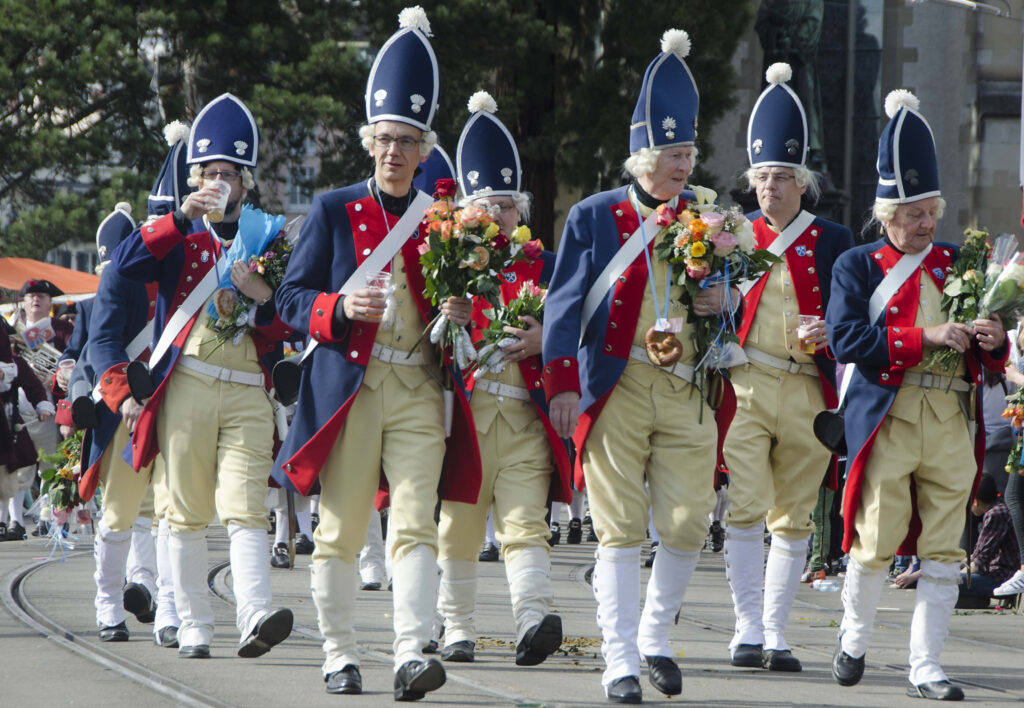
Guest canton
Since 1991, on the occasion of the 700th anniversary of the Swiss Confederation, the Central Committee of the Zurich guilds has invited a canton to be its guest at Sechseläuten every year. The guest canton presents itself at the Lindenhof with an exhibition, a colourful entertainment programme and culinary specialities. The host will take part in the children’s parade and the guilds’ procession to the bonfire with its own delegation and traditional and typical parade items.
This year, the canton of Uri will be the host of the Sechseläuten in Zurich. During this event the canton has the opportunity to bring a piece of Uri to Zurich and to present itself for four days in Zurich, offering not only cultural but also culinary specialities.







